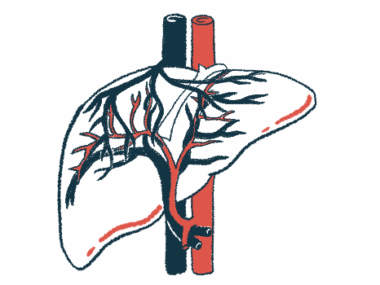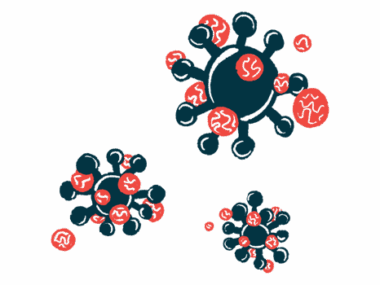AI tool uses liver tests to ID genetic forms of cholestasis in infants
Diagnostic model could help determine priority patients for genetic tests
Written by |

A new artificial intelligence (AI) algorithm can help identify babies with genetic forms of cholestasis, including progressive familial intrahepatic cholestasis (PFIC), using data from common liver function tests.
“We have developed a diagnostic model for applying advanced genetic tests in cholestatic patients, enabling an efficient selection of possible cases of inherited disease to receive genetic analysis, and expanding chances of finding disease-causing genes,” the researchers wrote. The algorithm’s development and validation were described in the study, “A prediction model for genetic cholestatic disease in infancy using the machine learning approach,” which was published in the Journal of Pediatric Gastroenterology and Nutrition.
Cholestasis refers to a slowed or stalled flow of bile, a digestive fluid made in the liver and then shipped out to the intestines. This slowdown causes bile to build up to toxic levels in the liver, which can lead to liver damage and symptoms such as pale stools, itching, and jaundice, which refers to a yellowing of the skin and eyes.
The causes of cholestasis vary. Some conditions, such as PFIC or Alagille syndrome, are caused by genetic disorders, but others arise due to biliary atresia, which isn’t genetic. Pinpointing the underlying cause can be important for guiding care and treatment, but it can be difficult to differentiate genetic versus non-genetic cholestasis.
“Due to the diversity of [causes] of cholestasis and the rarity of each genetic disorder, diagnosing infant cholestasis remains one of the most challenging tasks for clinicians and pediatric hepatologists [liver experts],” the researchers wrote. “Therefore, we think it is valuable and highly warranted to develop a diagnostic algorithm to determine who will be the priority patients for receiving genetic tests in cholestatic diseases at the early stage of the disease among a large number of patients.”
Separating genetic cholestasis from non-genetic cholestasis
Scientists in Taiwan, Thailand, and South Korea worked to develop a diagnostic model to help identify those more likely to have genetic cholestasis. This could help expedite genetic testing for patients who are most likely to get answers, while avoiding unnecessary costs and logistics from testing those who are unlikely to get actionable results.
To build their model, the researchers used machine learning, a type of AI that works by feeding data to a computer, alongside mathematical rules to identify patterns in the data and enable the computer to develop predictions.
The computer was fed with data from 1,008 babies with cholestasis seen at a single Taiwanese hospital, 63 of whom had been diagnosed with a genetic form of cholestasis, including PFIC and Alagille syndrome. The remainder had non-genetic forms. The researchers used data from 70% of these patients to train their model, and 30% were used to test it.
After a battery of optimization tests, the researchers settled on a model, dubbed Jaundice Diagnosis Easy for Baby (JADE-B), that looks at 20 widely accessible parameters, measured at disease onset, up to 1 month. The parameters included several established markers of liver damage like bilirubin, alkaline phosphatase (ALP), alanine transaminase (ALT) aspartate transaminase (AST), and gamma-glutamyl transferase (GGT). Most of these were at higher levels in babies with genetic forms of cholestasis.
Statistical tests showed JADE-B could identify 84.2% of cases with genetic forms of cholestasis and correctly rule out 82.4% of those with non-genetic forms. The model predicted that 21.8% of the cases were likely related to genetic forms of cholestasis. “In other words, the model could help avoid 78.2% of genetic tests,” the researchers wrote.
Additional tests of an external group of 98 patients from Thailand and South Korea showed slightly less accuracy, but the model was still accurate more often than not.
“We have developed a diagnostic model for applying advanced genetic tests in cholestatic patients, enabling an efficient selection of possible cases of inherited disease to receive genetic analysis, and expanding chances of finding disease-causing genes,” wrote the researchers, who emphasized that clinicians should always first prioritize testing for biliary atresia, where surgical interventions are needed as early as possible for best outcomes. Once biliary atresia and other non-genetic disorders that benefit from early surgery are excluded, JADE-B could help guide the next steps, they said.
“Our [model] empowers clinicians to expedite genetic testing for high-risk cases by simplifying the diagnostic process and optimizing resource allocation,” they wrote, adding multi-center studies should still validate the utility of the model before it can be used widely. “Our long-term goal is to apply similar models to many other diseases and use this approach to develop personalized treatment plans that could benefit the patients.”







